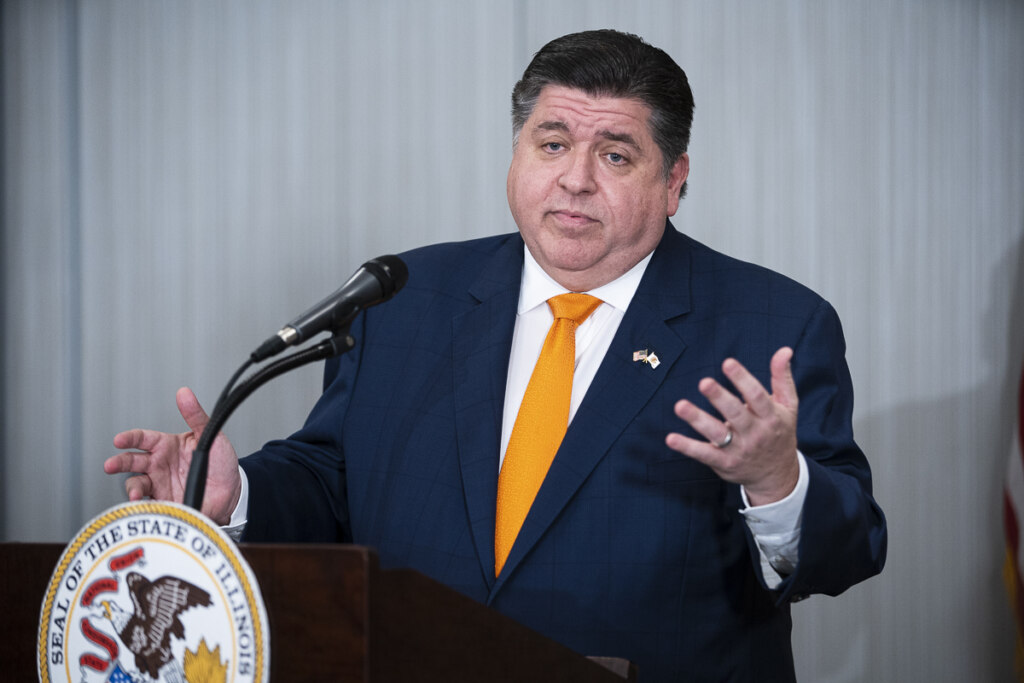Illinois and Washington tied for the third-highest unemployment rate in the U.S. in May 2024, with 4.9% of the workforce unemployed, according to new data from the U.S. Bureau of Labor Statistics. This rate not only surpasses the national average of 4% but is also higher than all neighboring states, highlighting ongoing economic challenges within Illinois.

Despite modest job growth in May 2024, Illinois ranked 44th among states for non-farm job growth, adding 43,900 jobs compared to May 2023. This 0.7% growth rate is significantly lower than the national job growth rate of 1.8%, during which states nationwide added 2.7 million jobs.
The highest growth rates in Illinois were seen in “other services,” which added 9,800 jobs (a 3.9% increase), and the state and local government sectors, both growing at 3.7%. However, the professional and business sector experienced the largest decline, with 24,800 fewer positions than a year earlier.
Illinois Employment Change by Industry (May 2023 – May 2024)
- Total Nonfarm: +43,900 (0.7%)
- Other Services: +9,800 (3.9%)
- State Government: +5,200 (3.7%)
- Local Government: +21,800 (3.7%)
- Private Education and Health Services: +29,200 (3.0%)
- Leisure and Hospitality: +13,900 (2.4%)
- Federal Government: +1,600 (2.0%)
- Wholesale Trade: +2,100 (0.7%)
- Mining, Logging, Construction: +1,100 (0.5%)
- Manufacturing: +1,400 (0.2%)
- Retail Trade: -3,000 (-0.5%)
- Financial Activities: -4,500 (-1.1%)
- Transportation and Utilities: -5,700 (-1.6%)
- Professional and Business Services: -24,800 (-2.6%)
- Information: -4,200 (-4.4%)
Illinois reported the lowest job growth rate among neighboring states from May 2023 to May 2024. Missouri had the strongest job growth at 2.8%. Illinois’ job recovery rate since the pandemic ranks worst among neighboring states and 45th in the nation, with only 9,800 more jobs than in January 2020, a mere 0.16% increase.
The state’s slow job recovery is further complicated by ongoing population loss. The U.S. Census Bureau reported a loss of 32,826 residents in 2023, marking the state’s 10th consecutive year of population decline. High taxes remain the primary reason for residents considering leaving the state, according to the Illinois Policy Institute’s Lincoln Poll in 2023.
Illinois has the highest state and local tax burden in the Midwest, the second-highest state corporate income tax in the nation, and one of the least business-friendly tax codes in the Midwest. Income tax hikes have made it harder for Illinoisans to find work and have reduced wage growth prospects for those employed.
Economic Challenges and Policy Recommendations
The economic challenges facing Illinois are multifaceted, stemming from both historical and recent policy decisions. High taxation has been a persistent issue, contributing to population decline and sluggish job growth. To address these challenges and foster a more robust economic environment, Illinois needs to implement several key policy changes.
Strengthening Fiscal Policies
One of the primary steps toward economic recovery is strengthening the state’s fiscal policies. This includes prudent budgeting, reducing unnecessary expenditures, and prioritizing investments that yield long-term economic benefits. By creating a more stable financial environment, Illinois can attract businesses and encourage job growth.
Removing Regulatory Burdens
Excessive regulations can stifle business innovation and growth. By streamlining regulatory processes and eliminating outdated or unnecessary regulations, Illinois can create a more business-friendly environment. This would not only attract new businesses but also support the expansion of existing ones.
Providing Real Tax Relief
Real tax relief is essential for both workers and businesses. Lowering the tax burden can increase disposable income for residents, stimulate consumer spending, and boost economic activity. For businesses, tax relief can enhance profitability, encourage investment, and create more job opportunities.
By taking these steps, Illinois can work towards creating a more competitive economic environment, potentially reversing the trend of slow job growth and positioning itself for stronger economic performance in the future. Addressing these challenges head-on with comprehensive policy reforms can pave the way for sustained economic growth and improved quality of life for Illinois residents.